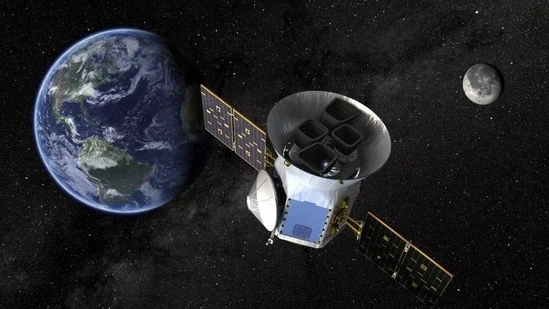
A Russian spacecraft, named Timed came dangerously close to a U.S. satellite, passing within just 10 meters in space. Experts have asserted that the near-miss could have had severe consequences, potentially endangering lives on Earth.
NASA’s Timed satellite, designed to monitor Earth’s atmosphere, narrowly avoided a collision with the defunct Russian spy satellite Cosmos 2221. Colonel Pam Melroy, NASA’s deputy administrator and a former astronaut, described the incident as “really scary” for the U.S. space agency.
Speaking at the Space Foundation’s Space Symposium in Colorado, Melroy said, “It was very shocking personally and for all of us at Nasa,” said Melroy while speaking at the Space Foundation’s Space Symposium in Colorado. “On February 28, a Nasa spacecraft called Timed and a Russian satellite, neither of them manoeuvrable, were expected to make a close path.
“We recently learnt that the path ended up being less than 10 metres apart, less than the distance of me to the front row. Had the two satellites collided, we would have seen debris generation, tiny shards travelling at 10,000 miles per hour, waiting to puncture a hole in another spacecraft and potentially putting human lives at risk.
She emphasized the potential danger posed by even small objects in space, saying, “It’s kind of sobering to think that something that’s the size of the eraser on the end of your pencil could wreak such havoc – but it can. We’re all worried about this. Timed really scared us.”
Meanwhile, Russian space officials confirmed an ongoing air leak from the Russian segment of the International Space Station (ISS). However, they assured that it doesn’t pose any danger to the crew. The Roscosmos state corporation stated that specialists are monitoring the leak and the crew regularly works to locate and repair possible leak spots.
“There is no threat to the crew or the station itself,” Roscosmos said in a statement carried by Russian news agencies. This statement came after Joel Montalbano, NASA’s station project manager, mentioned that the leak in the Russian segment has increased. He emphasized that it remains small and poses no threat to the crew’s safety or the station’s operations.
The Russian space officials first reported a leak in the Zvezda module in August 2020. Later that year, Russian crew members located what they believed was its source and attempted to fix it. In November 2021, another potentially leaky spot was found in a different part of the Russian section of the station. Both Roscosmos and NASA have confirmed that the leak posed no danger to the crew and didn’t affect the station’s operations.
Read more news like this on

